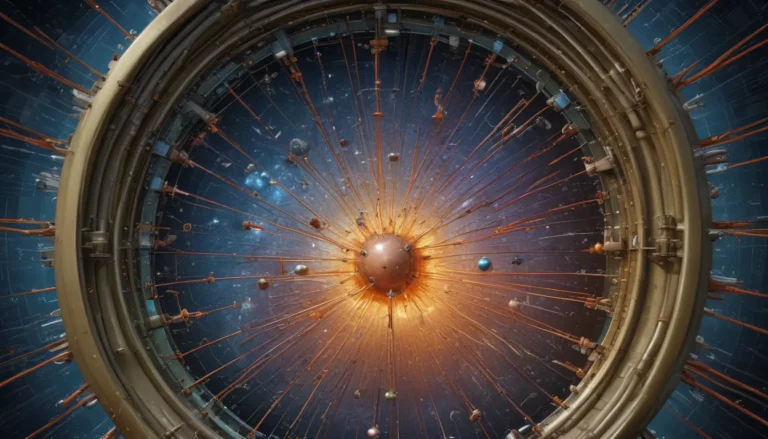A Note About Images: The images used in our articles are for illustration purposes only and may not exactly match the content. They are meant to engage readers, but the text should be relied upon for accurate information.
Projectile motion, the elegant dance of objects through the air under the influence of gravity, is a captivating phenomenon that has fascinated scientists and enthusiasts alike. From sports to space exploration, understanding the intricacies of projectile motion is key to unraveling the mysteries of the physical world. In this article, we will delve into the enchanting world of projectile motion and explore 19 astounding facts that will leave you in awe of this remarkable concept.
Understanding Projectile Motion
Projectile motion is the motion of an object that is launched into the air and moves along a curved trajectory, subject only to natural forces such as gravity and air resistance. It follows a parabolic path, resembling the shape of a parabola, as it travels through two-dimensional space. While the horizontal velocity of a projectile remains constant, the vertical velocity changes due to the force of gravity acting upon it.
The Fascinating Facts About Projectile Motion
- Maximum Height and Midpoint: The maximum height of a projectile is reached at the midpoint of its trajectory when the vertical velocity becomes zero.
- Launch Angle of 45 Degrees: The range of a projectile is maximized when launched at a 45-degree angle, optimizing the combination of vertical and horizontal components of velocity.
- Complementary Angles: Projectiles launched at complementary angles have the same range, showcasing the symmetry of projectile motion.
- Time of Flight: The time a projectile spends in the air, known as the time of flight, is influenced by the launch angle, with a greater angle resulting in a longer flight time.
- Initial Speed Impact: The initial speed at which a projectile is launched determines both its range and maximum height, with a higher speed leading to a longer range and greater height.
Applications of Projectile Motion
- In Sports: Projectile motion is fundamental in sports like baseball and basketball, where athletes use the principles of projectile motion to enhance their performance.
- In Astronomy: Concepts of projectile motion are applied in the study of celestial bodies to analyze their motion and trajectories in space.
- On Different Planets: Due to varying acceleration due to gravity on different planets, projectiles follow different paths and have varying ranges and maximum heights.
Historical Perspectives
- Ancient Greek Contributions: Ancient Greek mathematicians like Aristotle and Archimedes made significant contributions to the study of projectile motion, developing mathematical models to explain the motion of projectiles.
- Related to Circular Motion: Projectile motion is closely related to circular motion, as the curved path followed by a projectile is akin to the circular path of an object moving in a circle.
Conclusion
Projectile motion is a captivating concept that shapes our understanding of motion and the physical world. Whether you’re a student exploring the laws of physics or a curious observer of nature’s wonders, delving into the realm of projectile motion is sure to leave you spellbound by its elegance and complexity. So, next time you witness a projectile soaring through the air, take a moment to appreciate the beauty of the laws of motion at play.
FAQs About Projectile Motion
- What is projectile motion? Projectile motion refers to the curved path followed by an object launched into the air under the influence of gravity.
- What is the range equation? The range equation calculates the horizontal distance covered by a projectile based on its initial velocity and launch angle.
- Does the mass of the projectile affect its trajectory? No, the mass of the projectile does not impact its trajectory.
- Can a projectile reach a height greater than its initial point? No, the maximum height reached by a projectile cannot exceed its initial height.
- How does air resistance affect projectile motion? Air resistance can slightly alter a projectile’s trajectory, especially at high speeds, but is often negligible in most cases.
With a newfound appreciation for the wonders of projectile motion, you’re on your way to exploring the captivating realms of physics and unraveling the mysteries of the universe. Dive deeper into kinematics concepts and trajectory calculations to enhance your understanding of how objects move through space and time. Embrace the marvels of science and let the elegance of projectile motion inspire your own scientific journey.






